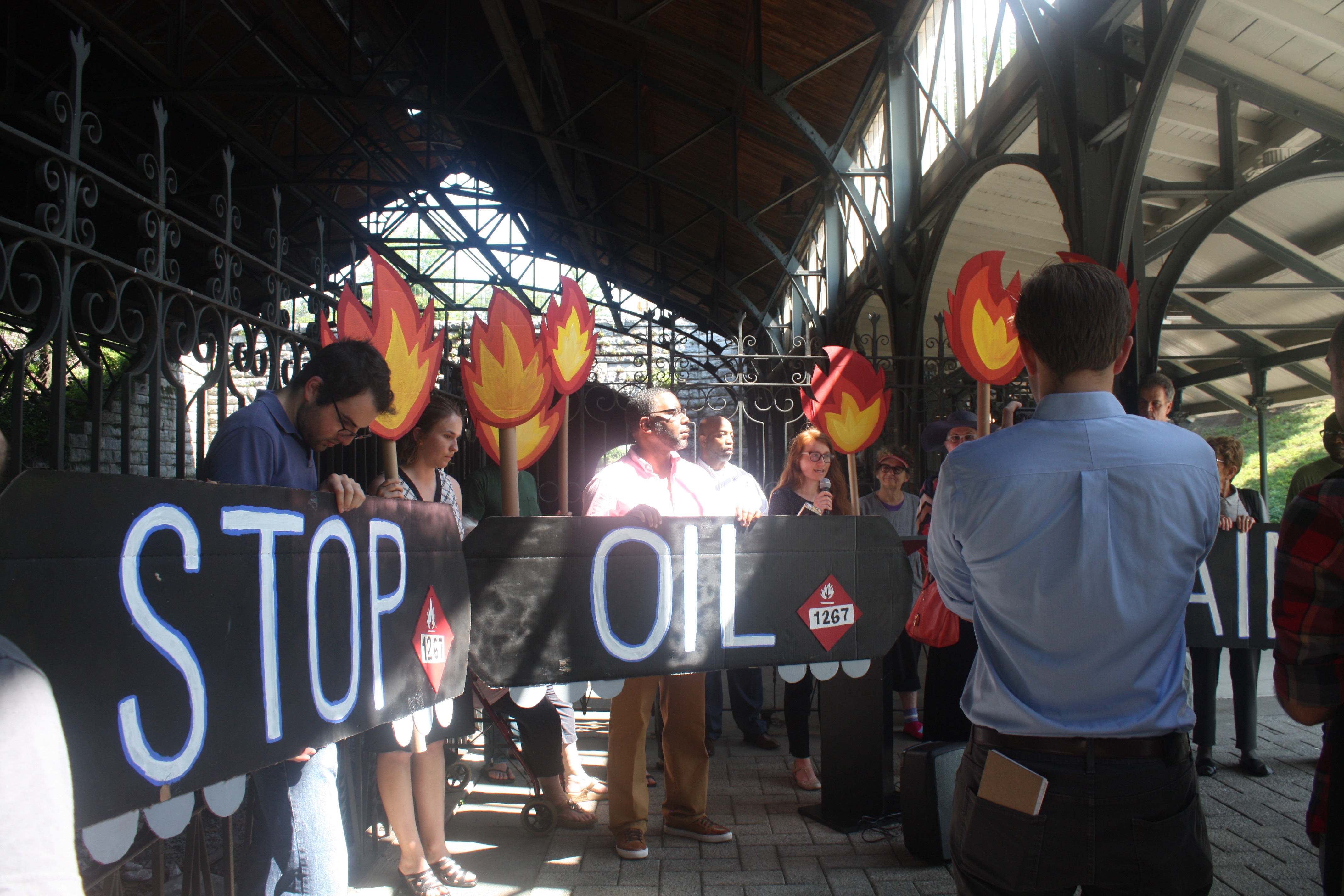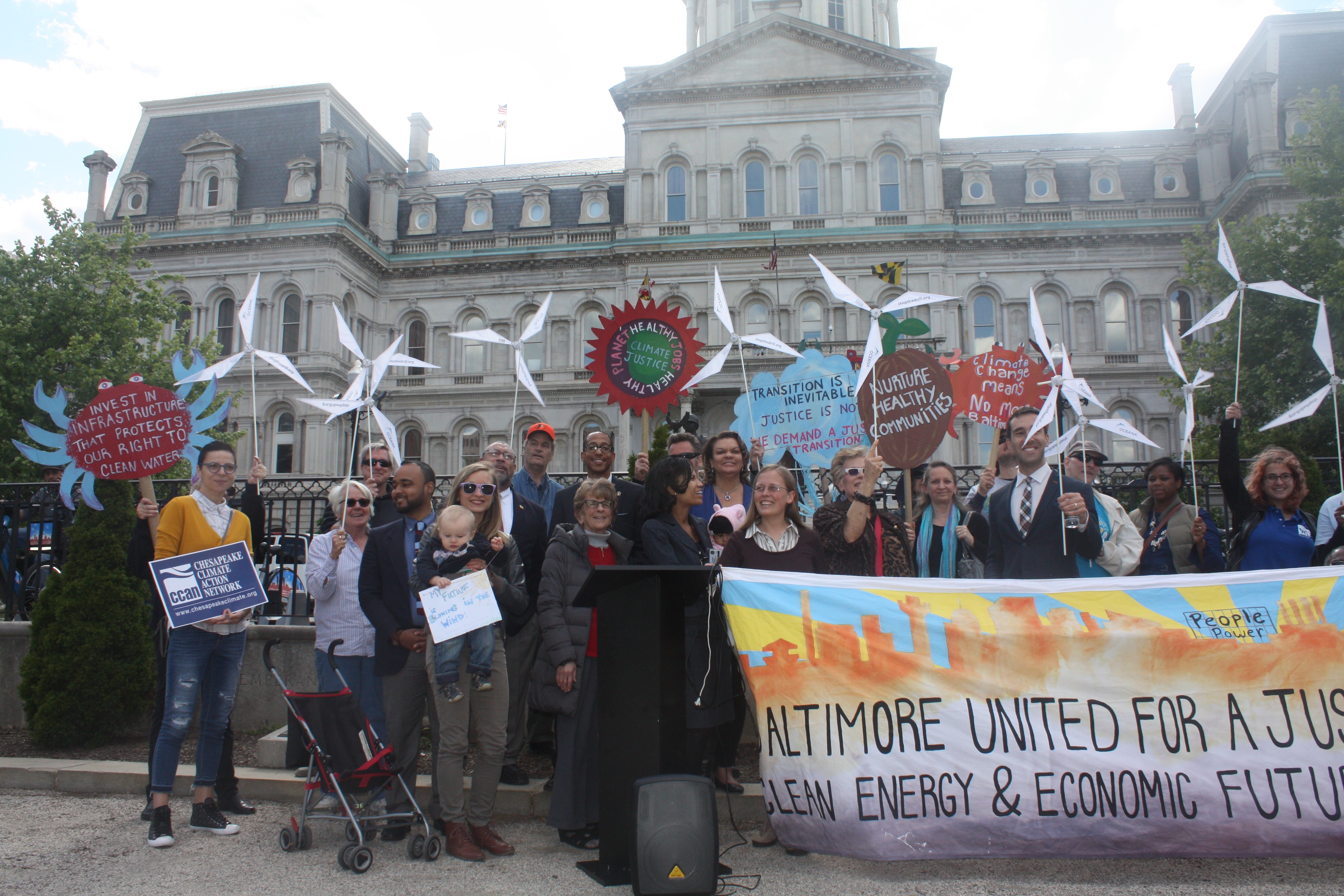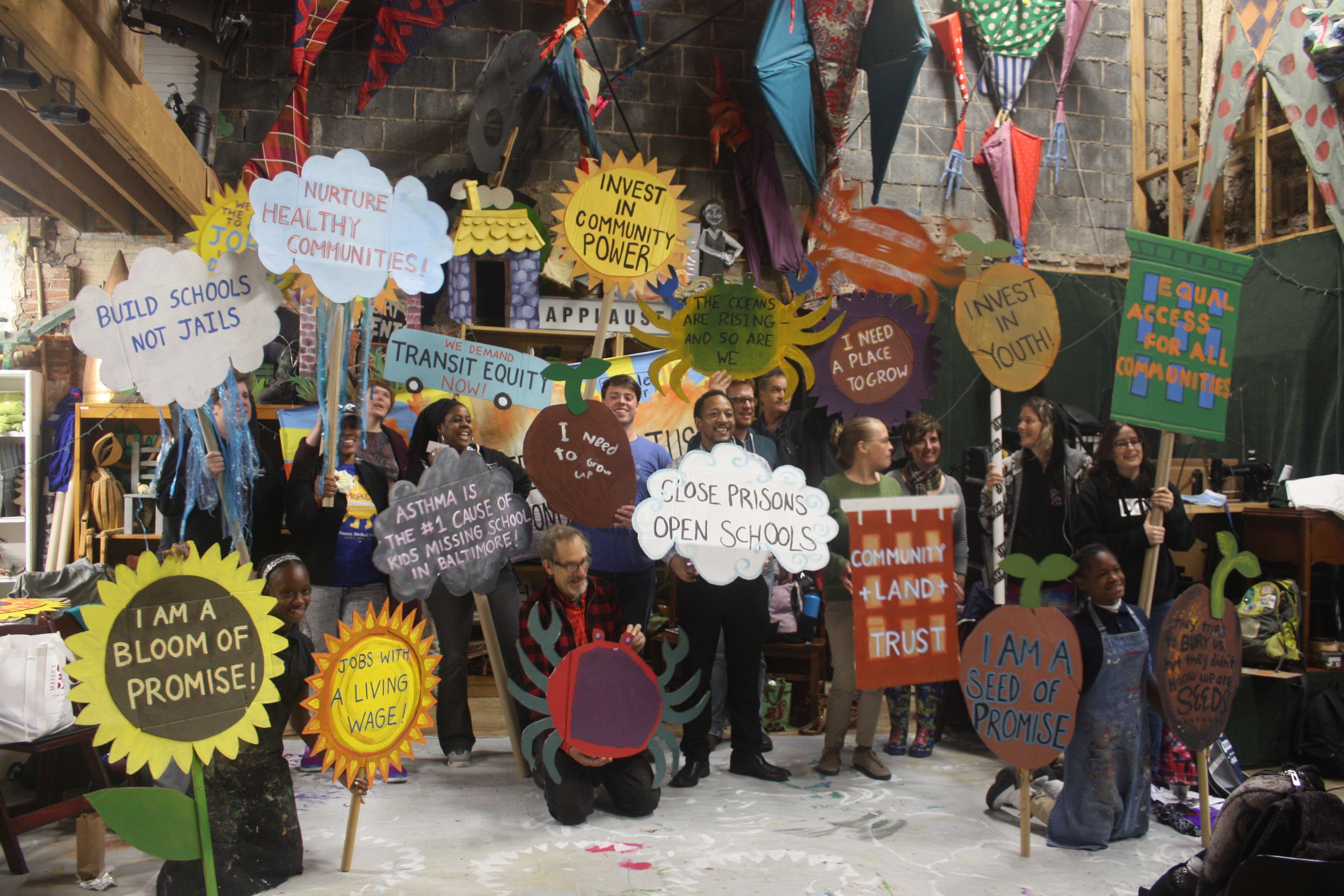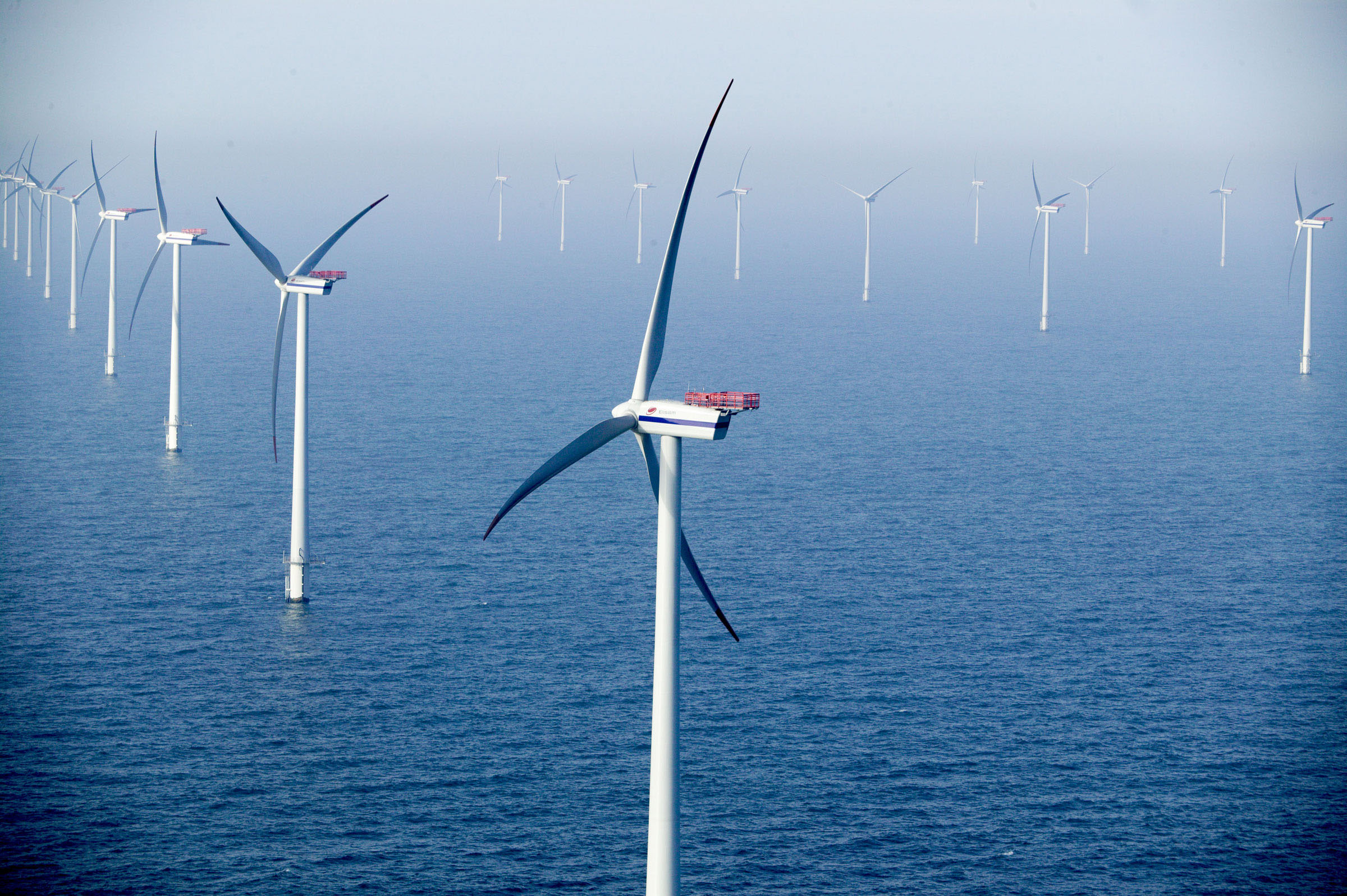On June 13, 2016, a freight train traveling from Philadelphia to Cumberland derailed inside the Howard Street Tunnel next to MICA’s campus. Twelve of the derailed cars were designed to carry liquefied petroleum gas but were thankfully empty at the time. The remaining car that derailed was carrying acetone. The incident took over 24 hours to clear.
At the time of last year’s derailment, I lived just a few blocks away and awoke that morning to numerous alerts about the incident from concerned friends. Knowing that explosive crude oil has traveled this exact route in Baltimore, I was terrified about the potential devastation due to a derailment. Thankfully, there were no injuries or leaks, and most of the cars that derailed were empty. But the incident begs the question, “what if?” What if that train had been carrying explosive crude oil?
Yesterday, residents of Baltimore’s crude oil train blast zone, MICA representatives, Councilwoman Mary Pat Clarke, and labor and environmental advocates rallied to commemorate the 1-year anniversary of this train derailment and to discuss the public health and safety threats posed to Baltimoreans by dangerous crude oil trains.
During the rally, MICA faculty member Valeska Populoh reflected on last year’s derailment: “The incident has raised my concerns about the transport of hazardous materials on these rail lines so close to our campus and the surrounding community, the potential threats to health and safety that these pose, as well as the potential for disruption of traffic and daily life in this central part of Baltimore in the event of another derailment.”

165,000 Baltimoreans live, work, and go to school in the oil train “blast zone” — the area that could be directly impacted if a crude oil train derailed and exploded. Baltimore has had too many close calls with freight trains. In addition to last year’s derailment next to MICA, there was the infamous 2001 derailment in the Howard Street Tunnel, which caused a fire and water main break that effectively shut down the city for a week. In 2013, a freight train exploded in Rosedale and broke windows, shook nearby buildings, and slowed traffic throughout the region. And in 2014, the retaining wall on 26th St collapsed, sending parked cars, streetlights, and large chunks of sidewalk onto the CSX tracks below.
All of these incidents occurred on the route that crude oil trains have been known to take through Baltimore and are examples of just how close Baltimore has come to a catastrophic incident.
During Tuesday’s rally, David McClure, President of the Amalgamated Transit Union Local 1300, said, “Each day our 2,500 MTA workers transport the people of Baltimore to work, school, the doctor, or wherever they need to go. And our riders’ safety is our number one priority. I repeat, it’s our number one priority. And now it’s time for the City Council to put the safety and health of the people first. It’s time to put a stop these trains from carrying dangerous crude oil and other hazardous cargo travelling through these densely-populated neighborhoods before we have a disaster on our hands.”
Ulysses Archie, an urban farmer and community advocate, spoke on Tuesday as a concerned father. He highlighted the forty Baltimore City Public Schools that are located within the blast zone and noted that tens of thousands of children, including his boys, are endangered by crude oil train traffic in the city.
The rally came a few days after members of the Baltimore City Council and Maryland General Assembly toured South Baltimore neighborhoods that are threatened by crude oil train traffic. On Friday, June 9th, community leaders concerned about the potential for a catastrophic explosion led the elected officials on a tour of Mt Winans, Westport, and Curtis Bay and saw some of the most vulnerable points in Baltimore’s infrastructure for a derailment and explosion.

While it is up to the federal government to ultimately ban the transport of crude-by-rail, local and state officials can take steps to protect Marylanders from this public health and safety threat. In Baltimore, the City Council can prevent the construction of new and the expansion of existing crude oil train terminals in order to limit oil train traffic within the city. Port cities across the country have been taking the lead on fighting fossil fuel infrastructure through zoning authority, and Baltimore can too. At the state level, the General Assembly can pass legislation focused on emergency preparedness, transparency, and proof of insurance for crude-by-rail incidents.

CCAN is working hard with our partners in the Baltimore City Council and in the Maryland General Assembly to protect Marylanders from crude-by-rail traffic. Sign the petition to the Baltimore City Council urging action and get involved with our local campaign!
Baltimore City Council Takes a Stand for Offshore Wind and Onshore Jobs
On May 8th, the Baltimore City Council resoundingly passed a resolution in support of offshore wind development in Maryland. Baltimore City Councilwoman Sharon Middleton introduced the resolution, which was co-sponsored by 14 of the 15 City Councilmembers, urging the Public Service Commission to approve one or both of the offshore wind farm proposals currently under consideration.
Before Monday’s vote, over 20 Baltimore residents, local elected officials, and environmental advocates rallied in front of City Hall to show support for offshore wind development and the Baltimore City Council resolution. Supporters displayed art created by local artists and activists for the Peoples Climate March, which many attended the previous weekend in Washington, DC.

The Maryland Public Service Commission (PSC) is currently reviewing two proposals for offshore wind projects off Ocean City, Maryland. These two proposals present Maryland, and Baltimore in particular, with the opportunity to become a hub for the growing offshore wind industry. US Wind plans to build a 748-megawatt offshore wind farm, and Skipjack Offshore Wind proposes a 120-megawatt project. Both applicants have named Sparrows Point in Baltimore County as the site of a future assembly and manufacturing plant for their operations.
The Public Service Commission found that development, construction, and operation of the first phase of the US Wind project (248 megawatts) would create 7,050 jobs over 20 years and generate an estimated $1,354 million in economic activity for the state. The Public Service Commission also found that development, construction, and operation of the Skipjack project would create 2,635 jobs over 20 years and generate an estimated $536.4 million in economic activity for the state. Much of the economic activity created by both projects would take place in Baltimore City and Baltimore County.

Not only would offshore wind projects create jobs and economic activity in Maryland and in Baltimore, a commitment to offshore wind energy would also displace polluting sources of energy, many of which are located in and around Baltimore, improving air quality across the state and reducing greenhouse gas emissions.
As an urban center and a port city, Baltimore has high potential for being heavily impacted by climate change. State and local efforts to reduce greenhouse gas pollution and invest in clean, renewable energy like offshore wind are important contributions to overall emissions reductions.

The Public Service Commission must decide by May 17th whether or not to approve the proposals. If approved, these offshore wind projects could bring thousands of family-sustaining jobs to the Baltimore area, reduce Maryland’s reliance on fossil fuels, and limit air pollution.

By passing this resolution on Monday, Baltimore City took a stand in support of offshore wind, family-sustaining jobs, and a stable climate. Now it’s up to the PSC to approve offshore wind in Maryland. Stay tuned!
The Art of the March
Baltimore’s Creative Minds Go to Work for the People’s Climate March
The Peoples Climate March is almost here — and Baltimore is ready!
Over the past few months, CCAN and other organizations in Baltimore have been gearing up to make the most out of the upcoming mobilization in Washington D.C. by forming the Baltimore Peoples Climate Movement. We want to make sure we bring Baltimore’s message to the march, and come back home with renewed hope and inspiration to make our city a cleaner, greener, more equitable place to live.
Mark our words, the resistance will be beautiful! We have hosted a series of art builds and created an art guide based on conversations with community members and local organizations. Over the past few weeks, local artists, community members, and activists have brought the ideas and drawings in the guide to life!
Scroll down to see what’s in store for art at the Peoples Climate March. And if you’re a Baltimorean, please join up with the Baltimore contingent at the march! We’ll be meeting at 4th St NW and Madison Drive this Saturday, April 29th at 11 a.m. Join us!













Offshore Wind Is A Fair Development Opportunity In Baltimore
For far too long, Baltimore has been forced to bear the burden of failed development that pollutes the city, causes disproportionate health impacts, and forces residents out of their communities. But now, offshore wind presents the city with an opportunity to become a manufacturing hub for clean energy.
South Baltimore is host to a slew of polluting and dangerous developments, including a 200-acre coal pier, medical waste incinerator, and numerous chemical and pesticide plants. It is also home to a crude oil shipping terminal. “Bomb trains” carrying explosive crude oil from North Dakota travel through the city, and many stop at the NuStar Energy Storage Terminal in Fairfield to transfer oil from rail to barge in order to ship it to refineries in the Northeast.
From 2013 to 2014, over 100 million gallons of crude oil were transported into Baltimore by rail to be offloaded and shipped to refineries. Transporting crude by rail puts 165,000 people in the “blast zone” in Baltimore – the area that could be directly impacted if a train were to derail and explode. Bakken crude oil is highly volatile and transporting it by rail has had devastating consequences, most notably the 2013 derailment and explosion in Lac-Mégantic, Quebec that killed 47 people and leveled the town.
There have been close calls in Baltimore in recent years. Last June, a train carrying acetone derailed in the Howard Street Tunnel right next to the Maryland Institute College of Art (MICA) — my alma mater. A school parking lot was filled with emergency vehicles for over a week while the derailment was contained. Last month, eight cars on a CSX freight train derailed on a sharp curve in Frederick County. While nothing spilled, the train was carrying hazardous materials and was traveling the same route that crude oil trains have been known to take to reach Baltimore.
And two weeks ago, a fire broke out in a scrap yard in Fairfield just across the street from the oil train shipping terminal there. The fire was contained, but once again, Baltimoreans were faced with a terrifying “what if” scenario had the fire reached the terminal.
These close calls, along with the string of derailments, fires, and explosions caused by oil trains across the country, demonstrate that transporting crude by rail is an unacceptable gamble that endangers people who live, work, and go to school near the tracks.
Meanwhile, it is clear that Marylanders are ready for clean energy.
Last month, the state held two public hearings in Berlin and Annapolis where residents showed up in droves to voice their support for offshore wind farm proposals.
Throughout the three-hour hearing in Berlin, person after person got up in front of the packed auditorium to speak about how offshore wind will help clean Maryland’s air, provide a reliable source of renewable energy, and create thousands of jobs across the state. Union members were a strong presence at the hearing, from piledrivers to carpenters, all of whom stand to benefit from the potential manufacturing and construction jobs across the state. And as a Baltimorean, talk of repurposing Sparrows Point into a wind turbine manufacturing hub was particularly exciting.
Instead of continuing to invest in failed development that brings polluting and dangerous materials like explosive crude oil into the heart of the city, Baltimore has an opportunity to become a central hub for clean energy jobs and fair development. Offshore wind offers one exciting pathway for a just transition in Baltimore where the city can move away from the polluting, dangerous fossil fuel industries of the past and become a clean energy powerhouse.
Tell the Public Service Commission to approve offshore wind in Maryland to help make this fair development future a reality in Baltimore.
Image at top from Sandia National Laboratories.




